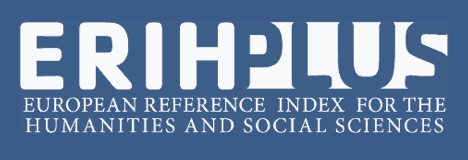THE LIVESTOCK IN GOIÁS SEEN THROUGH THE GIS WINDOW
Abstract
Agile and accurate livestock data production is a growing demand in public and private sectors. Therefore, geoprocessing techniques gain strength in the management of livestock production processes. Looking in a superficial way for a GIS, this can be compared to a simple database, however, by the addition of the spatial component, it becomes a system much more powerful than a simple database. The GIS importance is in its ability to multiply the conceptions of space revealing other paths to be traced by thought. This work aims, through a scenario about the Goiás livestock dynamics, from a spatialization of the livestock data produced by IBGE from 1974 to 2017, to present the potential of a GIS to study patterns in a given temporal and spatial cutout. In this context, the GIS presents itself as an efficient tool in providing an agile knowledge about space.
References
CAMARGO, J. C. G; REIS JÚNIOR, D. F. C. A filosofia (neo) posivista e a geografia quantitativa. In: VITTE, A. C (Org). Contribuições à História e à Epistemologia da Geografia. Rio de Janeiro: Bertrand Brasil, p. 83-99, 2007.
CNA – Confederação da Agricultura e Pecuária no Brasil. Com crescimento modesto, PIB da Agropecuária apresenta alta de 0,1% em 2018. Disponível em
CURRY, Michael R. Digital Places. 1. ed. Londres: Routledge, 1998.
GOMES, P. C. C. O lugar do olhar: Elementos para uma geografia da visibilidade. Rio de Janeiro: Bertrand Brasil, 2013, p.5-25.
HAESBAERT, R. Regional-Global: dilemas da região e da regionalização na Geografia Contemporânea. Rio de Janeiro: Bertrand Brasil, 2010, p. 15-37.
HARVEY, D. Space as keyword. In: Castree, N. e Gregory, D (org) David Harvey: A critical reader. Malden e Oxford: Blackwell. Tradução livre: Letícia Gianella. 2006.
INSTITUTO BRASILEIRO DE GEOGRAFIA E ESTATÍSTICA. Biomas continentais do Brasil. Disponível em:
INSTITUTO BRASILEIRO DE GEOGRAFIA E ESTATÍSTICA. PPM - Produção da pecuária municipal – 1974-2017. Rio de Janeiro, 1974-2017.
INSTITUTO BRASILEIRO DE GEOGRAFIA E ESTATÍSTICA. Proposta de Sistema Nacional de Pesquisas por Amostragem de Estabelecimentos Agropecuários – SNPA. Texto para discussão – 2ª versão. Rio de Janeiro: Coordenação de Agropecuária, Diretoria de pesquisas, 2011.
INSTITUTO BRASILEIRO DE GEOGRAFIA E ESTATÍSTICA. Malhas 2015. Disponível em
INSTITUTO BRASILEIRO DE GEOGRAFIA E ESTATÍSTICA. Divisão Regional do Brasil em Regiões Geográficas Imediatas e Regiões Geográficas Intermediárias 2017. Rio de Janeiro, Coordenação de Geografia, p. 1-82, 2017.
JEPSON, W., BRANNSTROM, C., FILIPPI. A. Access regimes and regional land change in the Brazilian Cerrado, 1972-2002. Ann. Assoc. Am. Geogr. v. 100, p. 87–111, 2010.
KLINK, C.A., MACHADO, R.B. Conservation of the Brazilian Cerrado. Conserv. Biol. v. 19, p. 707–713, 2005.
SANO, E.E., ROSA, R., BRITO, J. L. S., FERREIRA, L.G. Land cover mapping of the tropical savanna region in Brazil. Environ. Monit. Assess. v. 166, p. 113–124, 2010.
SANTOS, Milton. Natureza do espaço. São Paulo: Nobel, 1996. p. 61-110.
SHATTAN, S. A amostragem e as estatísticas agrícolas. Revista Brasileira de Estatística, v. 4, n.55, p. 216-226, 1953.
SHATTAN, S. et al. Sistema Integrado de Estatísticas Agrícolas. Relatório de Pesquisa Preliminar realizada para o Ministério da Agricultura. São Paulo: s.c.p., 2v, 1971.
SOUZA, M. L. DE. Território e (des)territorialização. O território: sobre espaço e poder, autonomia e desenvolvimento. In: CASTRO, I. E.; GOMES, P. C. C.; CORRÊA, R. L. (Orgs). Geografia: Conceitos e temas. Rio de Janeiro: Bertrand Brasil, 1995.
SOUZA, M. L. DE. Território e (des)territorialização. In: Os conceitos fundamentais da pesquisa sócio-espacial. Rio de Janeiro: Bertrand Brasil, p.77-110, 2013.
STRASSBURG, B. B. N. et al. Moment of truth for the Cerrado hotspot. Nat. Ecol. Evol, v. 1, n. 99, 2017.
SUETEGARAY, Dirce M. A. Geografia física(?) Geografia Ambiental (?). In: MENDONÇA, Francisco, KOZEL, Salete (Orgs.). Elementos de epistemologia da Geografia contemporânea. Curitiba: Ed. da UFPR, p. 111-120, 2002.

This work is licensed under a Creative Commons Attribution-NonCommercial 4.0 International License.
Policy Proposal for Free Access Journals
Authors who publish in this journal agree to the following terms:
a. Authors retain the copyright and grant the journal the right of first publication, with the work simultaneously licensed under the Creative Commons Attribution License which allows the sharing of the work with acknowledgment of the authorship of the work and initial publication in this journal.
b. Authors are authorized to take additional contracts separately, for non-exclusive distribution of the version of the work published in this journal (eg publish in institutional repository or as a book chapter), with acknowledgment of authorship and initial publication in this journal.
c. Authors are allowed and encouraged to publish and distribute their work online (eg in institutional repositories or on their personal page) at any point before or during the editorial process, as this can generate productive changes, as well as increase the impact and The citation of published work (See The Effect of Free Access).





















